#plainpalais
Photo

| S T R E E T R E F L E C T I O N 📸 Photo™ by @yr.shots / #YRShots / ©2022YRShots 🚩 Plaine de Plainpalais, Genève 🕕 Samedi 15 avril 2022, 22h48 📷 Canon EOS 80 D Canon EF 50.00mm f/1.8 STM f/2.5 -- 1/13 -- 50.00mm -- ISO400 🌐 http://yrshots.ch ___________________________________________ #plainpalais #plainedeplainpalais #illumination #lumieres #Genève #Geneva #igersgeneva #igersgeneve #ig_geneva #photographiegeneve #nightphotography #streetphotography #streetlife #gf_streets #SwissStreetCollective #lightphotography #reflection #bynight #lightfestival #streetspremier #progressivestreet #NoYa2N @apprendre.photo #photographeaccompli #formationsphotoalp #sublimezvosphotos #compositioncaptivante #oserlaphotoderue @life_is_street @Swissstreetcollective @igersgeneva @genevaconfidential @genevatourism @streetshotsinternational . (à Plaine de Plainpalais) https://www.instagram.com/p/CnO5ik5oPIL/?igshid=NGJjMDIxMWI=
#yrshots#plainpalais#plainedeplainpalais#illumination#lumieres#genève#geneva#igersgeneva#igersgeneve#ig_geneva#photographiegeneve#nightphotography#streetphotography#streetlife#gf_streets#swissstreetcollective#lightphotography#reflection#bynight#lightfestival#streetspremier#progressivestreet#noya2n#photographeaccompli#formationsphotoalp#sublimezvosphotos#compositioncaptivante#oserlaphotoderue
2 notes
·
View notes
Text
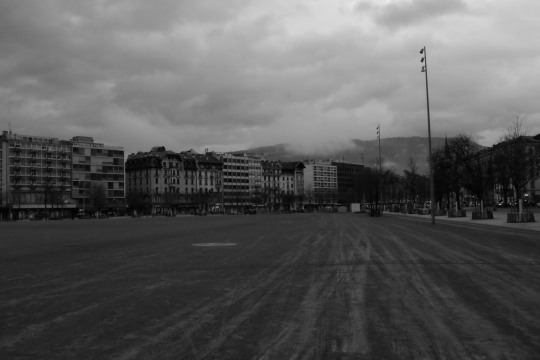
Genève, Plaine de Plainpalais, 2023
1 note
·
View note
Photo
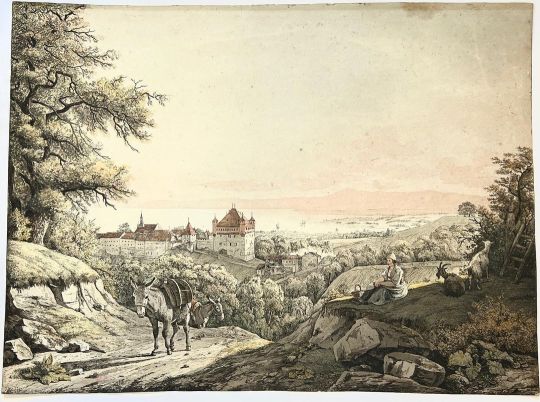
Large #oldmasterprint #view of #lausanne #swissantiques #swissart #artforsale #prints #geneva #plainpalais #fleamarket #oldmasterprints #forsale 50€ shipping not included (à Lausanne, Switzerland) https://www.instagram.com/p/ClTks5GIJhS/?igshid=NGJjMDIxMWI=
#oldmasterprint#view#lausanne#swissantiques#swissart#artforsale#prints#geneva#plainpalais#fleamarket#oldmasterprints#forsale
0 notes
Photo
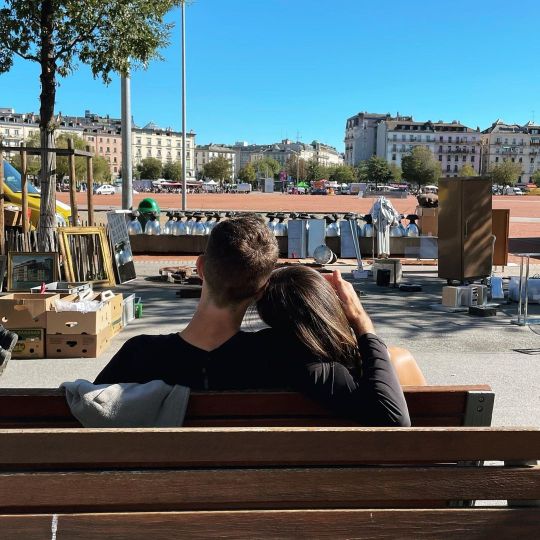
Flânerie, douceur de vivre et curiosités aux Puces de Plainpalais 😎 #geneva #genève #plainpalais #puces #brocante #promenade #weekend #igerssuisse #igersgeneva #webstagram #iphonesia #instagood #instagrameando #nofilter (à Plainpalais) https://www.instagram.com/p/CkDIy6kItL9/?igshid=NGJjMDIxMWI=
#geneva#genève#plainpalais#puces#brocante#promenade#weekend#igerssuisse#igersgeneva#webstagram#iphonesia#instagood#instagrameando#nofilter
0 notes
Text
[A]bout two third of the Swiss population visited the “Village noir” in Geneva. How is it possible that [...] the exhibition of 200 African people that two million people visited has fallen into oblivion? [...] Today, Geneva is considered one of the capitals of [so-called] [”]human rights[”]. Back in 1896, during the Swiss Second National Exhibition, it hosted a human zoo. There are very few visible references to it, except for one street called after its corresponding “white” exhibition, the “Village Suisse”. However, several researchers’ archival work helped unearth the history of the first Swiss “Village noir”. Inhabited by more than 200 individuals from Senegal, the village was situated a few streets from the city’s central square, the Plaine de Plainpalais. For six months, paying visitors observed these “actors” living their lives. Their religious ceremonies were advertised as public events. Tourists could take pictures with the African troupe and walk around their dwellings. [...]
Far from being a Swiss peculiarity, human zoos were spread around the West. Human exhibitions were a form of entertainment [...] [popularized] in the early 19th century in Great Britain. [...] [O]ne of the most famous shows was Sara Baartman, the “Hottenton Venus”. [...] [S]he was brought to Europe from South Africa to participate in an exhibition. Such “freak shows” spread around Europe and North America [...]. [I]n the late 19th century [...] shows became part of national and colonial exhibitions. The first ethnic exhibition of Nubians occurred in 1877 in Paris [...]. For the ticket-buying public, the experience was comparable to a visit to a regular zoo; it was about observing “exotic animals”.
As it often happens with animals, organisers re-created the subjects’ “natural habitat” [...]. The setting was constructed to perform authenticity. On the one hand, the civilisational discourse justifying colonial expansion and domination exaggerated the living representation and exhibition of the “savage” in need of enlightenment. On the other hand, the alleged brutality of the “native” was displayed through the mise-en-scène of their “primitive life”. These exhibitions did not present savagery; they invented a specific kind, which prepared the ground and fuelled further expansions and the ruling of “barbarian” and “uncivilised” societies. [...] All activities were meant to nourish Westerners’ enthusiasm for the exotic [...].
The turn of the century was among the highest points of scientific racism.
This was when the pseudo-scientific attempts to create a superior race thrived within Western anthropology and biology academic departments. For eugenicists, human zoos provided ‘samples’ for racist theories. During the Geneva National Exposition of 1896, Emile Yung gave a conference where he presented 15 people from the “Village noir”. He compared their skin colour and skull size to those of a Genevan. This process aimed to demonstrate how the size of the skull affected the level of civilisation and mental capacities. These ideas were spread among schoolteachers and helped crystallise and expand racist stereotypes. [...] Visitors were presented with an invented representation of Africa [...].
Moreover, as Patricia Purtschert of the University of Bern suggests, evolutionism and racist human-development theories at the core of the exhibitions had clear educational goals.
Thus, scientific racism developed within academia went hand in hand with popular racism: human zoos were places where these two faces of the same coin met. [...]
Indeed, Swiss scientists were active in shaping colonial mentalities. [...] Unlike other countries, Switzerland did not stop its human exhibitions during the interwar period. Until the 1960s, the national circus Knie presented the “Völkerschauen”. It included the display of [”]Eskimos[”], Catholic Indians, “mysterious Egyptians” or people with albinism. [...]
---
All text above by: Letizia Gaja Pinoja. “Dehumanisation, animalisation: Inside the terrible world of Swiss human zoos.” The Conversation. 23 June 2023. [Bold emphasis and some paragraph breaks/contractions added by me.]
39 notes
·
View notes
Text

Los misterios de la lápida de Borges
—¿Cómo se interesó por la lápida de Borges en Ginebra?
—La lápida me intrigó desde siempre, es decir, desde la primera vez que la vi. Borges murió en Ginebra, Suiza, el 14 de junio de 1986, y fue enterrado en el cementerio de Plainpalais, en esa ciudad. Es un lugar muy pacífico, agradable, con árboles. Creo que fue recién en 1996 que empezaron a circular las primeras fotos de la lápida en los diarios, por el décimo aniversario de la muerte de Borges. Lo primero que pensé al verla es que era un gran enigma. No estaba claro para mi qué significaban los textos ni los diseños tallados en la piedra. Yo ni siquiera sabía cómo había llegado ahí.
Lo más importante fue vincular esos elementos con la genealogía y la vida de Borges y el uso que él hacía de esos elementos en su obra
—¿Y cuál fue el resultado de esa búsqueda?—Bueno, no fue inmediato, fue un proceso muy gradual, que duró décadas. Primero tuve que entender en qué idioma estaban los textos, luego, de donde procedía cada símbolo tallado en la piedra. Y con esto, de tratarse de otro objeto, se hubiera terminado quizá el análisis. Pero en este caso hubo además otra larga etapa, la más importante, que consistió en vincular esos elementos con la vida, la genealogía, la historia personal de Borges y –sobre todo- con el uso que él hacía de estos elementos en sus obras. Y esa segunda etapa fue desarrollándose sola y en paralelo, a medida que releía la obra, la analizaba y publicaba otros libros sobre otras facetas de la vida de Borges.
—Una indagación muy borgeana…
—Sí, sin duda, y un proceso gradual en el que los conceptos fueron acumulándose a medida que yo investigaba otras facetas de la obra y la personalidad de Borges. Fue decantando a lo largo de muchos años. Finalmente, toda esta investigación culminó en un libro que trata exclusivamente sobre la lápida: Siete Guerreros Nortumbrios. Cuando les presenté el libro a mis editores, se sorprendieron. ¿Un libro sobre una lápida? Pero es mucho más que eso. Porque, como digo, apunta a toda una serie de significados sobre la obra de Borges. Y resultó muy bien. Quise hacer un libro muy fácil de leer, que pueda entender cualquier persona con interés, sin necesidad de conocimientos previos. Y entonces el libro termina también funcionando, paradójicamente, como una introducción a la obra de Borges.
—¿Y cuáles son esos enigmas de la lápida?
—Es una lápida aparentemente simple. Pero esa simpleza es la punta del ovillo, ya que lleva a una red de significados e ideas. En el frente, tiene tallada la imagen de siete guerreros que blanden sus armas. Y, debajo, una frase en inglés antiguo que pertenece aun antiguo poema que conmemora la batalla de Maldon, ocurrida en el año 991, en el que un ejército sajón debió enfrentar a una horda de vikingos. La frase es AND NE FORTHEDON NA, "y que no temieran", parte de la arenga que el líder sajón da a sus hombres antes de la batalla: les dice que no teman ante la muerte, y que tengan coraje.
Morir sin temor era una de las grandes ambiciones de Borges
—Un tema recurrente en Borges, el coraje…
—Absolutamente. Borges, curiosamente, sintió la nostalgia del destino épico de sus antepasados criollos militares. En un poema, lamenta: "No haber caído, / como otros de mi sangre". Y en una conferencia recuerda que su padre y su abuela inglesa "murieron ciegos; ciegos, sonrientes y valerosos, como yo también espero morir". Y luego agrega: "Se heredan muchas cosas (la ceguera, por ejemplo) pero no se hereda el valor. Sé que fueron valientes". Y esa es la clave para comprender este diseño. En la batalla de Maldon, un grupo de sajones, sintiéndose ya vencidos, decide arremeter de todas maneras contra los vikingos, aún sabiendo que no pueden ganar, que los espera la muerte. Deciden luchar hasta el final, sin miedo. Estoremite a la muerte del abuelo paterno de Borges: el coronel Francisco Borges,quien murió heroicamente en la batalla de La Verde, buscando también la muerte para demostrar su honor. Y esa era una de las grandes ambiciones de Borges: morir sin temor. Esta lápida es paradójicamente muy criolla
—¿Es decir que hubo un diseño intencionado de su lápida?
—Así es. Sabemos que Borges recitaba y tenía en mente este poema hacia el final de su vida. Por eso digo que esta lápida es paradójicamente muy criolla, muy argentina, pero de una manera indirecta. Recordemos que Borges tenía dos mandatos ancestrales: el primero, su destino literario, heredado de sus antepasados británicos, los Haslam, unos ingleses a la vez eruditos y excéntricos. El segundo mandato, más asociado con su lado criollo, era el de tener el mismo coraje que sus ancestros criollos y militares. Estos dos mandatos formaron un contraste toda su vida y fueron uno de los motores que lo impulsaron a escribir. Y la lápida de Borges constituye una síntesis de esos dos impulsos: lo criollo representado a través de lo sajón
—Hay un cruce de significados.
—Exactamente. Es una referencia indirecta. Los dibujos y textos de la lápida remiten, a través de un combate sajón y medieval, a los antepasados criollos de Borges, a los compadritos y cuchilleros del barrio de Palermo, a Evaristo Carriego, y a la "secta del cuchillo y el coraje" que fueron tan significativos en su obra. Lo nórdico y lo sajón están directamente emparentados en la obra de Borges con la Argentina. Por eso todo el conjunto es tan apropiado. Borges sentía un profundo cariño por Buenos Aires, pero era a la vez un hombre reservado, y cuanto más cariño sentía por algo, menos probable era que representara o nombrara de manera explícita en sus textos. Así que me parece muy bien que su lápida aluda a la Argentina, al coraje, a Buenos Aires, al Palermo de su infancia, pero de manera indirecta, sutil. Es así como él procedía en sus obras.
—¿Quién eligió los contenidos de la lápida?
—María Kodama, quien le encargó la talla a Eduardo Longato. Y creo que esos contenidos fueron muy bien elegidos: esta lápida es un gran homenaje, ya que plasma muy acertadamente ejes centrales de la vida y la obra de Borges, y los pensamientos que él tenía en el último tramo de su vida. Hay un testimonio interesantísimo de Héctor Bianciotti en el que cuenta que visita a Borges en Suiza, y Borges se pone a recitar el poema de Maldon. Al plasmar la batalla de Maldon en piedra, entonces, la lápida alude a sus anhelos y sus temores, y a líneas fundamentales de su creación literaria. Borges quería morir sin temor, como murió el Coronel Borges, y como murieron también su padre y su abuela inglesa.
—¿Y qué hay del reverso?
—Tiene también tallada una frase: "Hann tekr sverðit Gram ok leggr í meðal þeira bert", que proviene de la Völsunga saga, una serie de relatos que fue escrita en el siglo XIII y significa: "Él toma la espada Gram y la coloca entre ellos desenvainada". Este es a su vez el epígrafe de un cuento de Borges, "Ulrica".��Es una referencia al amor. Y debajo hay una talla de un barco que, fue –muy acertadamente- tomado de una piedra vikinga. Ese barco simboliza la eternidad y el viaje final del hombre.
El coraje guerrero era un tema recurrente en Borges. El coraje guerrero era un tema recurrente en Borges
—¿Qué lo llevó a usted a investigar a Borges?—Bueno, yo también tuve una suerte de "abuela inglesa", y me crie también en una biblioteca de libros ingleses. Originariamente estudié informática, egresé del Massachusetts Institute of Technology y estudié inglés antiguo y escandinavo antiguo en Harvard e hice otra maestría, en antropología, en Texas y además soy lingüista, o como me gusta decir a mí, filólogo y me fascina estudiar idiomas, cuanto más extraños, mejor. He estudiado japonés, chino, galés, hebreo, árabe, sánscrito y tantos otros… También me interesan las religiones, las mitologías, todos temas que fascinaban a Borges y aparecen recurrentemente en su obra.
—¿Qué siente al haber realizado este desciframiento?
—Que pude entender mejor a Borges. La lápida, como he dicho, representa los núcleos de su creación literaria. Tuve una confirmación cuando, después de publicar Siete Guerreros Nortumbrios, leí el siguiente texto de Estela Canto:
La herencia manifiesta en Borges era conspicua: su abuela paterna inglesa y su madre. Su abuela inglesa era el mundo; su madre, la voluntad de arraigarse, de ser argentino ante todo. Las dos tendencias estuvieron siempre contrapuestas en él. Y es probable que los entreveros de los anglos[ajones] del siglo X y las riñas de maleantes criollos lo hayan llevado al intento de unificar en un símbolo las dos vertientes más marcadas de su ser.
El símbolo tallado en el frente de su lapida representa magníficamente esta unificación, de una manera sutil, indirecta. Y esto es, como he dicho, muy apropiado. Como decía el mismo Borges en Otras inquisiciones: "Ciertos crepúsculos y ciertos lugares, quieren decirnos algo, o algo dijeron que no hubiéramos debido perder […] esta inminencia de una revelación, que no se produce, es, quizá, el hecho estético".
.
Martín Hadis
https://www.infobae.com/cultura/2016/06/14/los-misterios-de-la-lapida-de-borges/
Borges, aun en su muerte, la mera vena
#jorge luis borges#martin hadis#frases#escritos#pensamientos#fragmentos#poesia#literatura#escritores#libros#poemas#literatura universal
5 notes
·
View notes
Text
Frankenstein by Mary Shelley
CHAPTER VII.
On my return, I found the following letter from my father:—
"My dear Victor,
"You have probably waited impatiently for a letter to fix the date of your return to us; and I was at first tempted to write only a few lines, merely mentioning the day on which I should expect you. But that would be a cruel kindness, and I dare not do it. What would be your surprise, my son, when you expected a happy and glad welcome, to behold, on the contrary, tears and wretchedness? And how, Victor, can I relate our misfortune? Absence cannot have rendered you callous to our joys and griefs; and how shall I inflict pain on my long absent son? I wish to prepare you for the woful news, but I know it is impossible; even now your eye skims over the page, to seek the words which are to convey to you the horrible tidings.
"William is dead!—that sweet child, whose smiles delighted and warmed my heart, who was so gentle, yet so gay! Victor, he is murdered!
"I will not attempt to console you; but will simply relate the circumstances of the transaction.
"Last Thursday (May 7th), I, my niece, and your two brothers, went to walk in Plainpalais. The evening was warm and serene, and we prolonged our walk farther than usual. It was already dusk before we thought of returning; and then we discovered that William and Ernest, who had gone on before, were not to be found. We accordingly rested on a seat until they should return. Presently Ernest came, and enquired if we had seen his brother: he said, that he had been playing with him, that William had run away to hide himself, and that he vainly sought for him, and afterwards waited for him a long time, but that he did not return.
"This account rather alarmed us, and we continued to search for him until night fell, when Elizabeth conjectured that he might have returned to the house. He was not there. We returned again, with torches; for I could not rest, when I thought that my sweet boy had lost himself, and was exposed to all the damps and dews of night; Elizabeth also suffered extreme anguish. About five in the morning I discovered my lovely boy, whom the night before I had seen blooming and active in health, stretched on the grass livid and motionless: the print of the murderer's finger was on his neck.
"He was conveyed home, and the anguish that was visible in my countenance betrayed the secret to Elizabeth. She was very earnest to see the corpse. At first I attempted to prevent her; but she persisted, and entering the room where it lay, hastily examined the neck of the victim, and clasping her hands exclaimed, 'O God! I have murdered my darling child!'
"She fainted, and was restored with extreme difficulty. When she again lived, it was only to weep and sigh. She told me, that that same evening William had teased her to let him wear a very valuable miniature that she possessed of your mother. This picture is gone, and was doubtless the temptation which urged the murderer to the deed. We have no trace of him at present, although our exertions to discover him are unremitted; but they will not restore my beloved William!
"Come, dearest Victor; you alone can console Elizabeth. She weeps continually, and accuses herself unjustly as the cause of his death; her words pierce my heart. We are all unhappy; but will not that be an additional motive for you, my son, to return and be our comforter? Your dear mother! Alas, Victor! I now say, Thank God she did not live to witness the cruel, miserable death of her youngest darling!
"Come, Victor; not brooding thoughts of vengeance against the assassin, but with feelings of peace and gentleness, that will heal, instead of festering, the wounds of our minds. Enter the house of mourning, my friend, but with kindness and affection for those who love you, and not with hatred for your enemies.
"Your affectionate and afflicted father,
"Alphonse Frankenstein.
"Geneva, May 12th, 17—."
Clerval, who had watched my countenance as I read this letter, was surprised to observe the despair that succeeded to the joy I at first expressed on receiving news from my friends. I threw the letter on the table, and covered my face with my hands.
"My dear Frankenstein," exclaimed Henry, when he perceived me weep with bitterness, "are you always to be unhappy? My dear friend, what has happened?"
I motioned to him to take up the letter, while I walked up and down the room in the extremest agitation. Tears also gushed from the eyes of Clerval, as he read the account of my misfortune.
"I can offer you no consolation, my friend," said he; "your disaster is irreparable. What do you intend to do?"
"To go instantly to Geneva: come with me, Henry, to order the horses."
During our walk, Clerval endeavoured to say a few words of consolation; he could only express his heart-felt sympathy. "Poor William!" said he, "dear lovely child, he now sleeps with his angel mother! Who that had seen him bright and joyous in his young beauty, but must weep over his untimely loss! To die so miserably; to feel the murderer's grasp! How much more a murderer, that could destroy such radiant innocence! Poor little fellow! one only consolation have we; his friends mourn and weep, but he is at rest. The pang is over, his sufferings are at an end for ever. A sod covers his gentle form, and he knows no pain. He can no longer be a subject for pity; we must reserve that for his miserable survivors."
Clerval spoke thus as we hurried through the streets; the words impressed themselves on my mind, and I remembered them afterwards in solitude. But now, as soon as the horses arrived, I hurried into a cabriolet, and bade farewell to my friend.
My journey was very melancholy. At first I wished to hurry on, for I longed to console and sympathise with my loved and sorrowing friends; but when I drew near my native town, I slackened my progress. I could hardly sustain the multitude of feelings that crowded into my mind. I passed through scenes familiar to my youth, but which I had not seen for nearly six years. How altered every thing might be during that time! One sudden and desolating change had taken place; but a thousand little circumstances might have by degrees worked other alterations, which, although they were done more tranquilly, might not be the less decisive. Fear overcame me; I dared not advance, dreading a thousand nameless evils that made me tremble, although I was unable to define them.
I remained two days at Lausanne, in this painful state of mind. I contemplated the lake: the waters were placid; all around was calm; and the snowy mountains, "the palaces of nature," were not changed. By degrees the calm and heavenly scene restored me, and I continued my journey towards Geneva.
The road ran by the side of the lake, which became narrower as I approached my native town. I discovered more distinctly the black sides of Jura, and the bright summit of Mont Blanc. I wept like a child. "Dear mountains! my own beautiful lake! how do you welcome your wanderer? Your summits are clear; the sky and lake are blue and placid. Is this to prognosticate peace, or to mock at my unhappiness?"
I fear, my friend, that I shall render myself tedious by dwelling on these preliminary circumstances; but they were days of comparative happiness, and I think of them with pleasure. My country, my beloved country! who but a native can tell the delight I took in again beholding thy streams, thy mountains, and, more than all, thy lovely lake!
Yet, as I drew nearer home, grief and fear again overcame me. Night also closed around; and when I could hardly see the dark mountains, I felt still more gloomily. The picture appeared a vast and dim scene of evil, and I foresaw obscurely that I was destined to become the most wretched of human beings. Alas! I prophesied truly, and failed only in one single circumstance, that in all the misery I imagined and dreaded, I did not conceive the hundredth part of the anguish I was destined to endure.
It was completely dark when I arrived in the environs of Geneva; the gates of the town were already shut; and I was obliged to pass the night at Secheron, a village at the distance of half a league from the city. The sky was serene; and, as I was unable to rest, I resolved to visit the spot where my poor William had been murdered. As I could not pass through the town, I was obliged to cross the lake in a boat to arrive at Plainpalais. During this short voyage I saw the lightnings playing on the summit of Mont Blanc in the most beautiful figures. The storm appeared to approach rapidly; and, on landing, I ascended a low hill, that I might observe its progress. It advanced; the heavens were clouded, and I soon felt the rain coming slowly in large drops, but its violence quickly increased.
I quitted my seat, and walked on, although the darkness and storm increased every minute, and the thunder burst with a terrific crash over my head. It was echoed from Salêve, the Juras, and the Alps of Savoy; vivid flashes of lightning dazzled my eyes, illuminating the lake, making it appear like a vast sheet of fire; then for an instant every thing seemed of a pitchy darkness, until the eye recovered itself from the preceding flash. The storm, as is often the case in Switzerland, appeared at once in various parts of the heavens. The most violent storm hung exactly north of the town, over that part of the lake which lies between the promontory of Belrive and the village of Copêt. Another storm enlightened Jura with faint flashes; and another darkened and sometimes disclosed the Môle, a peaked mountain to the east of the lake.
While I watched the tempest, so beautiful yet terrific, I wandered on with a hasty step. This noble war in the sky elevated my spirits; I clasped my hands, and exclaimed aloud, "William, dear angel! this is thy funeral, this thy dirge!" As I said these words, I perceived in the gloom a figure which stole from behind a clump of trees near me; I stood fixed, gazing intently: I could not be mistaken. A flash of lightning illuminated the object, and discovered its shape plainly to me; its gigantic stature, and the deformity of its aspect, more hideous than belongs to humanity, instantly informed me that it was the wretch, the filthy dæmon, to whom I had given life. What did he there? Could he be (I shuddered at the conception) the murderer of my brother? No sooner did that idea cross my imagination, than I became convinced of its truth; my teeth chattered, and I was forced to lean against a tree for support. The figure passed me quickly, and I lost it in the gloom. Nothing in human shape could have destroyed that fair child. He was the murderer! I could not doubt it. The mere presence of the idea was an irresistible proof of the fact. I thought of pursuing the devil; but it would have been in vain, for another flash discovered him to me hanging among the rocks of the nearly perpendicular ascent of Mont Salêve, a hill that bounds Plainpalais on the south. He soon reached the summit, and disappeared.
I remained motionless. The thunder ceased; but the rain still continued, and the scene was enveloped in an impenetrable darkness. I revolved in my mind the events which I had until now sought to forget: the whole train of my progress towards the creation; the appearance of the work of my own hands alive at my bedside; its departure. Two years had now nearly elapsed since the night on which he first received life; and was this his first crime? Alas! I had turned loose into the world a depraved wretch, whose delight was in carnage and misery; had he not murdered my brother?
No one can conceive the anguish I suffered during the remainder of the night, which I spent, cold and wet, in the open air. But I did not feel the inconvenience of the weather; my imagination was busy in scenes of evil and despair. I considered the being whom I had cast among mankind, and endowed with the will and power to effect purposes of horror, such as the deed which he had now done, nearly in the light of my own vampire, my own spirit let loose from the grave, and forced to destroy all that was dear to me.
Day dawned; and I directed my steps towards the town. The gates were open, and I hastened to my father's house. My first thought was to discover what I knew of the murderer, and cause instant pursuit to be made. But I paused when I reflected on the story that I had to tell. A being whom I myself had formed, and endued with life, had met me at midnight among the precipices of an inaccessible mountain. I remembered also the nervous fever with which I had been seized just at the time that I dated my creation, and which would give an air of delirium to a tale otherwise so utterly improbable. I well knew that if any other had communicated such a relation to me, I should have looked upon it as the ravings of insanity. Besides, the strange nature of the animal would elude all pursuit, even if I were so far credited as to persuade my relatives to commence it. And then of what use would be pursuit? Who could arrest a creature capable of scaling the overhanging sides of Mont Salêve? These reflections determined me, and I resolved to remain silent.
It was about five in the morning when I entered my father's house. I told the servants not to disturb the family, and went into the library to attend their usual hour of rising.
Six years had elapsed, passed as a dream but for one indelible trace, and I stood in the same place where I had last embraced my father before my departure for Ingolstadt. Beloved and venerable parent! He still remained to me. I gazed on the picture of my mother, which stood over the mantel-piece. It was an historical subject, painted at my father's desire, and represented Caroline Beaufort in an agony of despair, kneeling by the coffin of her dead father. Her garb was rustic, and her cheek pale; but there was an air of dignity and beauty, that hardly permitted the sentiment of pity. Below this picture was a miniature of William; and my tears flowed when I looked upon it. While I was thus engaged, Ernest entered: he had heard me arrive, and hastened to welcome me. He expressed a sorrowful delight to see me: "Welcome, my dearest Victor," said he. "Ah! I wish you had come three months ago, and then you would have found us all joyous and delighted. You come to us now to share a misery which nothing can alleviate; yet your presence will, I hope, revive our father, who seems sinking under his misfortune; and your persuasions will induce poor Elizabeth to cease her vain and tormenting self-accusations.—Poor William! he was our darling and our pride!"
Tears, unrestrained, fell from my brother's eyes; a sense of mortal agony crept over my frame. Before, I had only imagined the wretchedness of my desolated home; the reality came on me as a new, and a not less terrible, disaster. I tried to calm Ernest; I enquired more minutely concerning my father, and her I named my cousin.
"She most of all," said Ernest, "requires consolation; she accused herself of having caused the death of my brother, and that made her very wretched. But since the murderer has been discovered—"
"The murderer discovered! Good God! how can that be? who could attempt to pursue him? It is impossible; one might as well try to overtake the winds, or confine a mountain-stream with a straw. I saw him too; he was free last night!"
"I do not know what you mean," replied my brother, in accents of wonder, "but to us the discovery we have made completes our misery. No one would believe it at first; and even now Elizabeth will not be convinced, notwithstanding all the evidence. Indeed, who would credit that Justine Moritz, who was so amiable, and fond of all the family, could suddenly become capable of so frightful, so appalling a crime?"
"Justine Moritz! Poor, poor girl, is she the accused? But it is wrongfully; every one knows that; no one believes it, surely, Ernest?"
"No one did at first; but several circumstances came out, that have almost forced conviction upon us; and her own behaviour has been so confused, as to add to the evidence of facts a weight that, I fear, leaves no hope for doubt. But she will be tried to-day, and you will then hear all."
He related that, the morning on which the murder of poor William had been discovered, Justine had been taken ill, and confined to her bed for several days. During this interval, one of the servants, happening to examine the apparel she had worn on the night of the murder, had discovered in her pocket the picture of my mother, which had been judged to be the temptation of the murderer. The servant instantly showed it to one of the others, who, without saying a word to any of the family, went to a magistrate; and, upon their deposition, Justine was apprehended. On being charged with the fact, the poor girl confirmed the suspicion in a great measure by her extreme confusion of manner.
This was a strange tale, but it did not shake my faith; and I replied earnestly, "You are all mistaken; I know the murderer. Justine, poor, good Justine, is innocent."
At that instant my father entered. I saw unhappiness deeply impressed on his countenance, but he endeavoured to welcome me cheerfully; and, after we had exchanged our mournful greeting, would have introduced some other topic than that of our disaster, had not Ernest exclaimed, "Good God, papa! Victor says that he knows who was the murderer of poor William."
"We do also, unfortunately," replied my father; "for indeed I had rather have been for ever ignorant than have discovered so much depravity and ingratitude in one I valued so highly."
"My dear father, you are mistaken; Justine is innocent."
"If she is, God forbid that she should suffer as guilty. She is to be tried to-day, and I hope, I sincerely hope, that she will be acquitted."
This speech calmed me. I was firmly convinced in my own mind that Justine, and indeed every human being, was guiltless of this murder. I had no fear, therefore, that any circumstantial evidence could be brought forward strong enough to convict her. My tale was not one to announce publicly; its astounding horror would be looked upon as madness by the vulgar. Did any one indeed exist, except I, the creator, who would believe, unless his senses convinced him, in the existence of the living monument of presumption and rash ignorance which I had let loose upon the world?
We were soon joined by Elizabeth. Time had altered her since I last beheld her; it had endowed her with loveliness surpassing the beauty of her childish years. There was the same candour, the same vivacity, but it was allied to an expression more full of sensibility and intellect. She welcomed me with the greatest affection. "Your arrival, my dear cousin," said she, "fills me with hope. You perhaps will find some means to justify my poor guiltless Justine. Alas! who is safe, if she be convicted of crime? I rely on her innocence as certainly as I do upon my own. Our misfortune is doubly hard to us; we have not only lost that lovely darling boy, but this poor girl, whom I sincerely love, is to be torn away by even a worse fate. If she is condemned, I never shall know joy more. But she will not, I am sure she will not; and then I shall be happy again, even after the sad death of my little William."
"She is innocent, my Elizabeth," said I, "and that shall be proved; fear nothing, but let your spirits be cheered by the assurance of her acquittal."
"How kind and generous you are! every one else believes in her guilt, and that made me wretched, for I knew that it was impossible: and to see every one else prejudiced in so deadly a manner rendered me hopeless and despairing." She wept.
"Dearest niece," said my father, "dry your tears. If she is, as you believe, innocent, rely on the justice of our laws, and the activity with which I shall prevent the slightest shadow of partiality."
2 notes
·
View notes
Photo

Jazz Festival à Genève, Plaine de Plainpalais, 1992.
Art de Roger & Sophie Pfund.
Avec Michel Perez Quartet, Lionel Hampton, John Mc Laughlin, Nina Simone, James Blood Ulmer, Joe Henderson, The Blues Brothers, the Brecker Brothers, Maynard Ferguson, Khaled, Rachel Gould, George Gruntz, Etta James.
7 notes
·
View notes
Photo
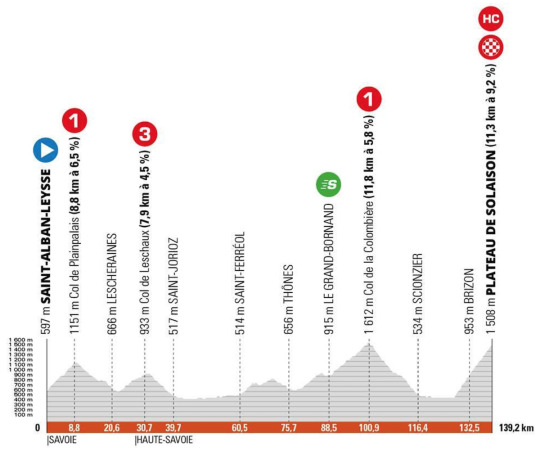
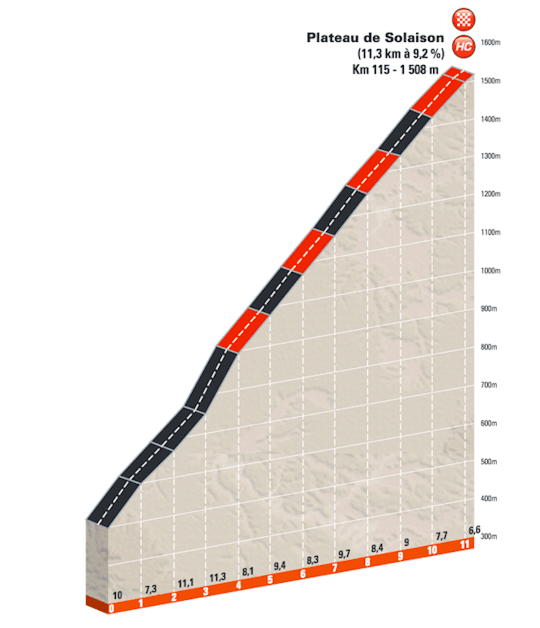
Critérium Du Dauphiné Stage 8 Preview
The final day of the Dauphiné and a hard stage awaits with the hard Col de la Colombière to wear down riders and then the sharp climb to the Plateau de Solaison.
The Route: 139km and if not as many celebrity climbs as yesterday, there’s as much vertical gain with another 3,700m. The start is a spin away from the Ag2r Citroën team’s HQ and it’s straight up the flanks of Mont Revard to the Col de Plainpalais and across the Bauges plateau, where the mountain stage scenes of the Le Vélo de Ghislain Lambert were filmed and it’s across to the Col de Leschaux, it’s all scenic with grazing cows rather than hard gradients. After a descent the race tours Annecy’s opal lake and then comes an unmarked climb of the Col de Marais.
The Finish: 11.3km at 9.2% and described in fuller detail in a Roads to Ride piece. There’s a narrow pinch point just before the climb to line things out in a case a sizeable group is approaching the climb and then they round a bend and it’s 10-12% for the first four kilometres, a selective start as they tackle the section that climbs up the side of a cliff. Things ease up a touch once they reach the village of Brison but it’s only towards the top that the slope begins to back off before levelling off to 2-3% for the final straight to the line.
2 notes
·
View notes
Photo

Plaine de Plainpalais. Веб-камеры Женевы
Веб-камера Женевы с видом на Plaine de Plainpalais. Четкое изображение в высоком качестве позволяют наслад��ться виртуальной прогулкой, по великолепной женевской площади, даже если вы находитесь в квартире или на рабочем месте. Трансляция передается в режиме реального времени.
Подробнее на https://world-cam.ru/cams/geneva-webcams-watch-online/plaine-de-plainpalais-veb-kamery-zhenevy/
0 notes
Text
Entre la nuit du 11 et du 12 décembre 1602, le duc de Savoie, Charles Emmanuel I, fait attaquer Genève avec 2000 soldats. Ils atteignent Plainpalais, et le plan est d'escalader les murs de la ville (c'est pourquoi la fête s'appelle "l'Escalade") pour la prendre. En raison de sa richesse et car les Savoyards veulent rétablir le catholicisme à Genève, la ville est une cible. Cependant, les citoyens résistent et restent indépendants. Une figure célèbre est la Mère Royaume, qui cette nuit-là était en train de cuire une soupe et l'a jetée sur un soldat. On se souvient de cet événement avec des marmites en chocolat.
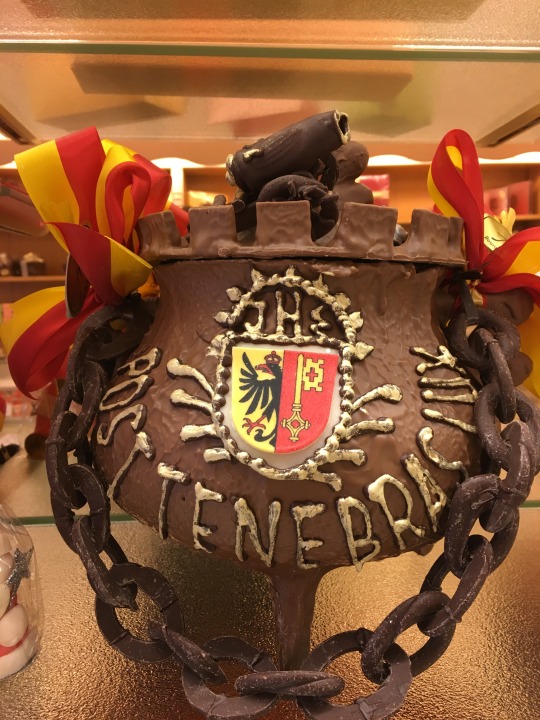
0 notes
Photo
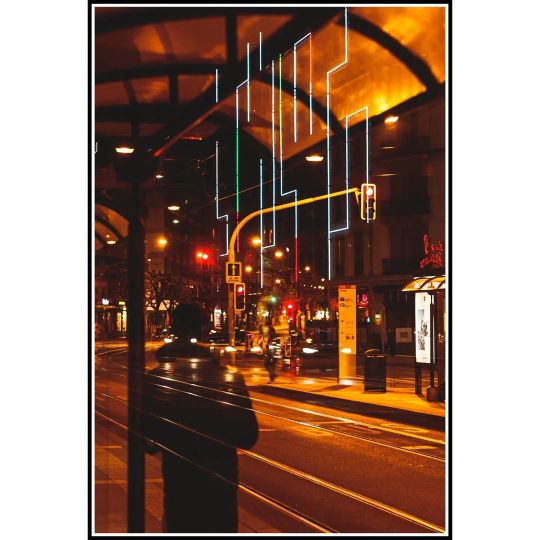
| S T R E E T R E F L E C T I O N 📸 Photo™ by @yr.shots / #YRShots / ©2022YRShots 🚩 Plaine de Plainpalais, Genève 🕕 Samedi 15 avril 2022, 22h48 📷 Canon EOS 80 D Canon EF 50.00mm f/1.8 STM f/2.5 -- 1/13 -- 50.00mm -- ISO400 �� http://yrshots.ch ______________________________________________ #plainpalais #plainedeplainpalais #illumination #lumieres #Genève #Geneva #igersgeneva #igersgeneve #ig_geneva #photographiegeneve #nightphotography #streetphotography #streetlife #gf_streets #SwissStreetCollective #lightphotography #reflection #bynight #lightfestival #streetspremier #progressivestreet #NoYa2N @apprendre.photo #photographeaccompli #formationsphotoalp #sublimezvosphotos #compositioncaptivante #oserlaphotoderue @life_is_street @Swissstreetcollective @igersgeneva @genevaconfidential @genevatourism @streetshotsinternational . (à Plaine de Plainpalais) https://www.instagram.com/p/CnO5ik5oPIL/?igshid=NGJjMDIxMWI=
#yrshots#plainpalais#plainedeplainpalais#illumination#lumieres#genève#geneva#igersgeneva#igersgeneve#ig_geneva#photographiegeneve#nightphotography#streetphotography#streetlife#gf_streets#swissstreetcollective#lightphotography#reflection#bynight#lightfestival#streetspremier#progressivestreet#noya2n#photographeaccompli#formationsphotoalp#sublimezvosphotos#compositioncaptivante#oserlaphotoderue
1 note
·
View note
Text
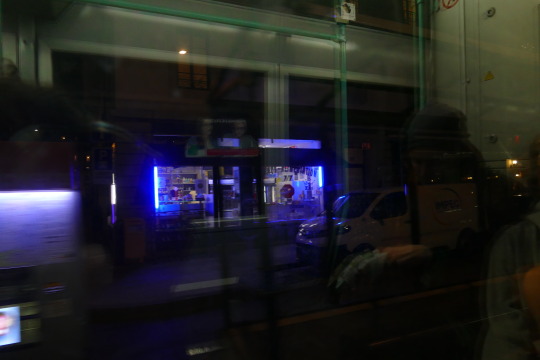
Vue du tram, Genève la nuit est perdue dans sont flux discontinu.
Arrêt Blanche, Plainpalais, 2017.
0 notes
Text
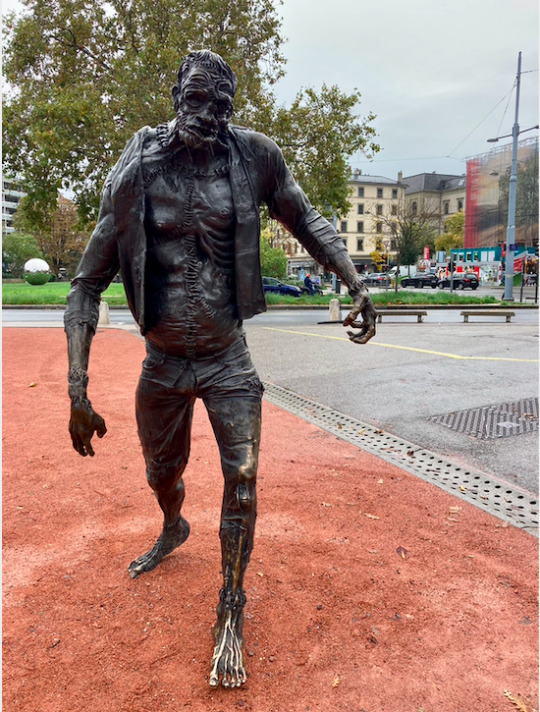
La statue "Frankie" a.k.a "The Creature of Doctor Frankenstein" du collectif d'artistes KLAT composé de Jérôme Massard, Florian Saini et Konstantin Sgouridis (2013-14) illustrant le "Frankenstein" de Mary Shelley (1816) dans le parc du Plainpalais devant la sphère d'acier "Moon" de l'artiste Not Vital (2019) à Genève, novembre 2023.
1 note
·
View note
Text



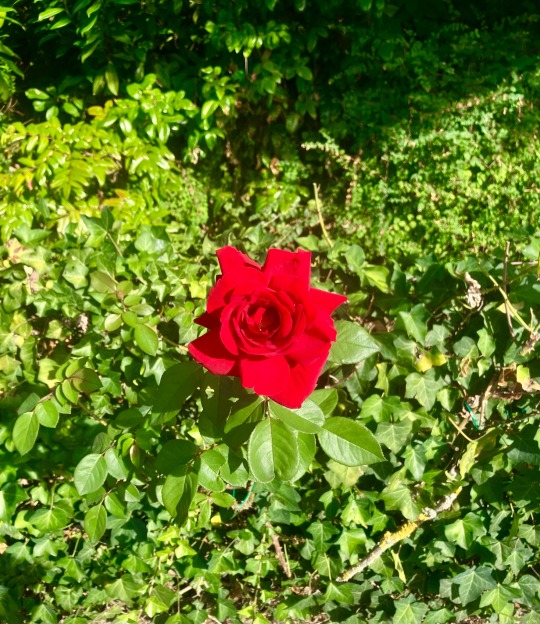
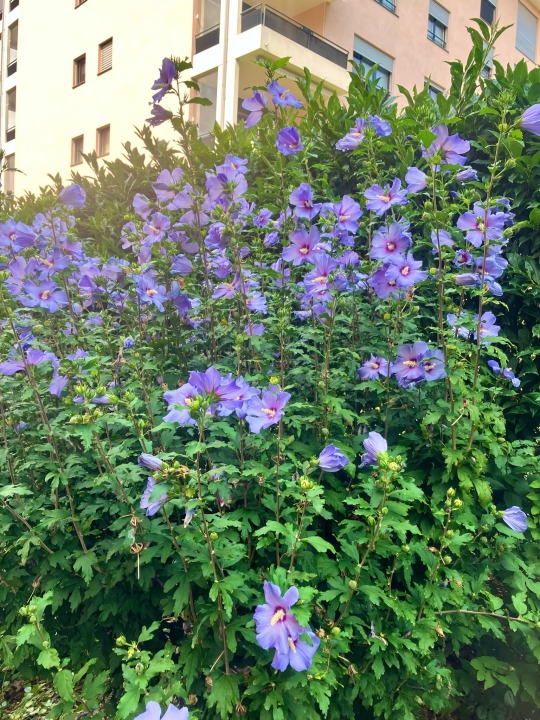
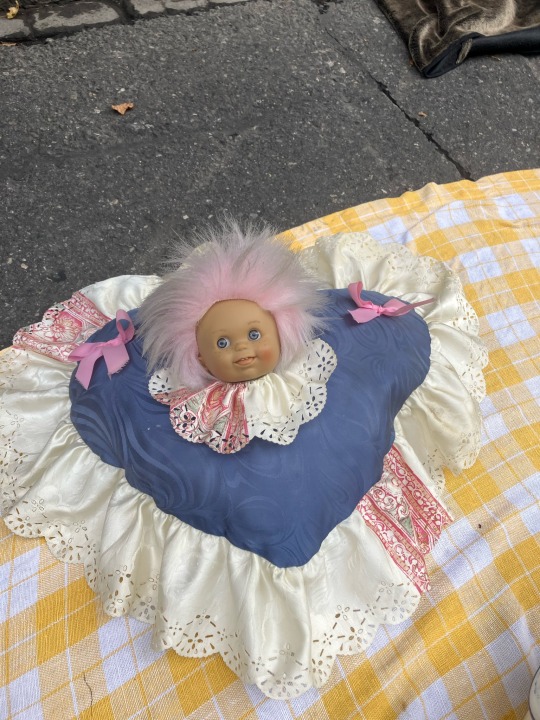
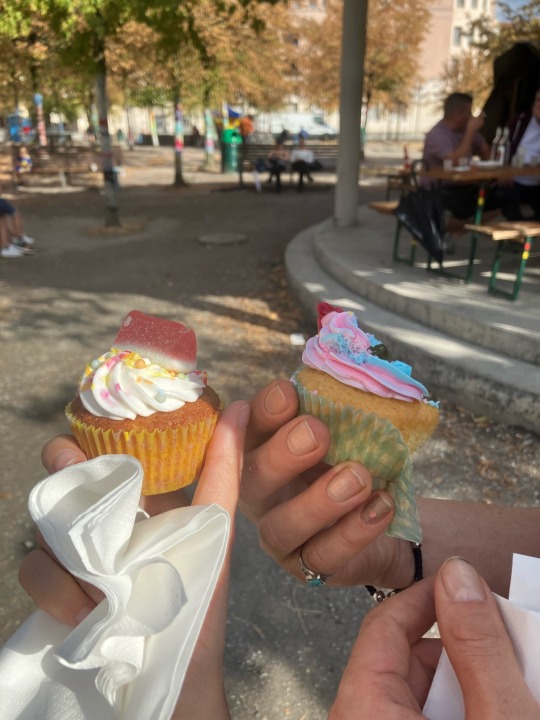
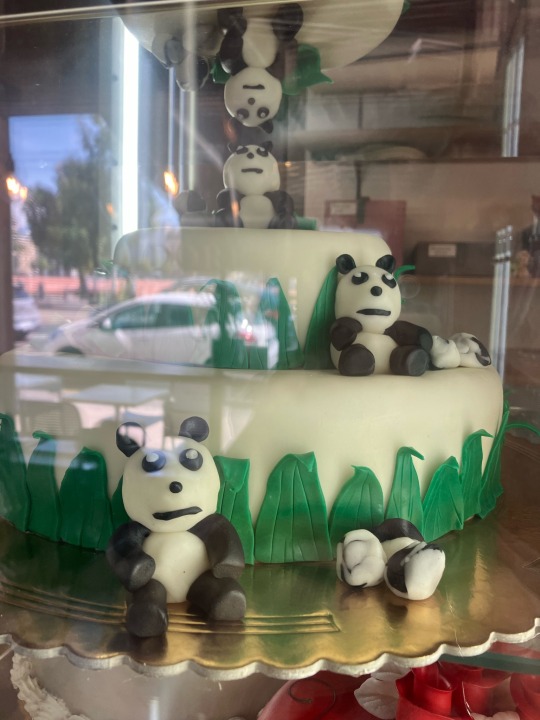
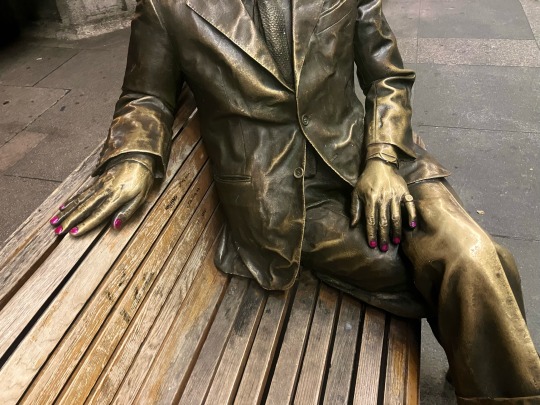
Scattered content dump. I found the pimped-out motorized chair rather funny. A sign from a lettuce bar. The weird doll head thing was apparently supposed to be a wall deco that someone hand-made for some reason; I spotted it at one of the La Ville Est a Vous events, basically an open garage sale market where everyone can reserve a space and sell their old stuff. There are festivities and food sold nearby at these events, and I got a beautiful cupcake with a friend (pictured). I did not buy the doll head. The statue is one of several at the central tram stop in Plainpalais, someone had painted this one’s nails pink.
0 notes
Text
💒 Soirée au Temple de Plainpalais coin salon 🛋 de 18h30 à 20h suivi d’un repas à prendre avec soi.
Quel est le sens de la vie? Quelle est ma place? Où je vais?
Que signifie réussir sa vie? C’est quoi le bonheur? La vie? La mort?
Faire face au suicide? La solitude? La souffrance? La violence? L’amour?
Les relations? Les dépendances?
Aucun sujet n’est tabou aux Soirées JAER. Nous sommes en quête de sens et de spiritualité dans une démarche ouverte, inclusive, solidaire et progressiste. Au LAB, pas de bonnes ou de mauvaises réponses. On cherche ensemble autour d’une Parole puissante capable de nous relever, de nous guider, de raviver notre foi et notre espérance en un Dieu qui est tout Amour.
Rejoins le groupe whatsapp en t’inscrivant auprès de Nicolas: [email protected]
076 693 59 70
Pour tout info supplémentaire vous pouvez me contacter au numéro suivant 0779590681 sur WhatsApp
PROCHAINES DATES (vendredi 18h30-20h)
– Vendredi 09 décembre (Nicolas)
– 17 février : renvoi vers la Before de la Silent 19h au temple de la servette
– 17 mars : Shalom, La Paix Intérieur
– 28 avril
– 26 mai
– 16 juin
Animation: pasteur Nicolas Lüthi
merci de votre présence
0 notes